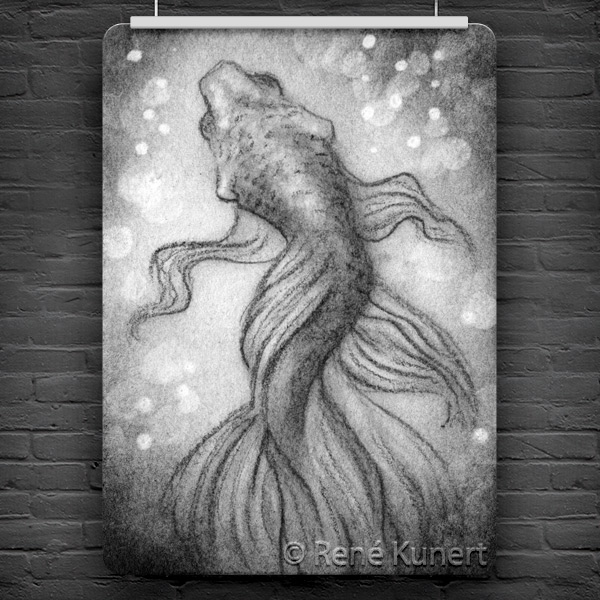External Links
The appearance of external links on this web site does not constitute endorsement by René Kunert for the external Web sites or the information, products or services contained therein. René Kunert does not exercise any editorial control over the information you may find at these locations. All links are active with with relevant information at the time of posting.
This site uses cookies.
For terms on artwork usage: http://renekunertart.com/artwork-usage/
Copyrighted Material
All graphic images and other site content including text and other resources are © René Kunert, unless otherwise specified. They must NOT – under any circumstances – be distributed or passed on to any third party (such as, but not limited to, Yahoo Groups, Facebook, etc.) without first emailing for permission.
Copyright Information
Knowledge of copyright laws is a must to ensure that you do not breach them, and to protect yourself and your work from being victims of a copyright breach. These issues are very important, as individuals (and businesses) are regularly in breach of copyright and legal action is taken. Hefty fines can be imposed. You also have the moral obligation to respect and uphold the rights of other artists, and to have your rights treated with the same consideration.
What about Fair Use?
“Fair Use” is the one phrase that is completely misunderstood by a large group of people. The “10% rule” is not what they think it is. That small portion is for review, criticism, illustration of a lesson, or quotation in a scholarly or technical work. It is not for the creation of a new artwork. Creation of new work is not mentioned in fair use. Parodies are included, however, if the need arises, you will have to defend it in court. Use for a learning experience is fine, but the moment you exhibit it, the use changes. Exhibition is a form of advertisement and therein you are in breach of copyright.
I found it on the internet. Doesn’t that mean it’s public?
No. Just no. The internet is a tool such as a Newspaper. The newspaper (should) hold the copyright (or have permission of use) of its images just as the owner of a website (should) hold copyright of theirs. You will often find illegally reproduced images on websites, but that doesn’t mean you can use them, as well. They are in breach of copyright, just as you would be. Public domain is a completely separate issue.
I changed it a little. Does that make it okay?
No. Sorry. Even if you change it, breaches copyright. End of story.
They wouldn’t care about my little drawing. They wouldn’t catch me, anyway.
Yes, you could be up for a hefty fine. Not just a little, I mean thousands of dollars and the destruction of your name and work. Everyone can see your work online and small exhibitions or shops can easily get caught. Don’t risk it. Unfair use of someone else’s photo or artwork is just as much theft as if you stole their wallet.
What about Fan Art?
Fan art is in that gray area of fair use and is considered a “derivative work” or even a “parody.” Some companies and artists encourage fan art and some send out active cease and desist letters and engage in lawsuits. Be sure you know which company/artist does what. When you are making fan art, you are sometimes within the domain of fair use, but do this at your own risk. The fact that so much fan art exists and is produced indicates that most copyright holders of such work do not see it as a threat provided that you are not attempting to profit from it in any way, but that does not save you from a lawsuit. Permission is always the best choice.
If you are using references other than your own, there are several ways you can avoid breaching copyright
- Where possible, use only your own reference material. Use your camera. Even if it is just your phone camera, you can get some reference material.
- Use out-of-copyright materials. Check this guide to copyright expiration.
- Use Public Domain images. Be sure to check the rules for whichever photo you wish to use – Finding Free Stock Photos
- Obtain permission. Write the owner of the content. Often, permission will be granted for a small fee or/and under certain conditions. More on obtaining permission.
- Write down all of your sources for later reference in the case the need arises to look it up again.
- Know the laws in your area.
Copyright belongs to the artist at the moment of creation. Mailing yourself copies is a myth and will not stand up in court. Do not waste the effort.
Should someone breach your copyright, in the US you cannot sue unless you have registered with the Copyright Office of the Library of Congress. It is not free, but if you are worried about copyright theft, it would be your best choice.
When displaying your images on the internet, there are several methods to deter the misuse of your work.
- Add a copyright symbol and written notice on the page.
- Post images as small and low-res as possible.
- Add a watermark across the image.
- Dissect larger images into sections and rejoin them (Image slicing; experienced website creators).
- Use scripting to disable copying and saving.
- Keep yourself informed on copyright laws.
Copyright is a major issue for artists. Remember that it is your responsibility to know your rights, responsibilities, and obligations.













